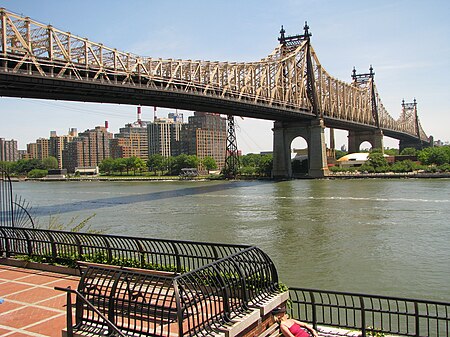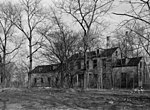Queensboro Bridge

The Queensboro Bridge, officially named the Ed Koch Queensboro Bridge, is a cantilever bridge over the East River in New York City. Completed in 1909, it connects the neighborhood of Long Island City in the borough of Queens with the Upper East Side in Manhattan, passing over Roosevelt Island. The bridge is also known as the 59th Street Bridge because its Manhattan end is located between 59th and 60th streets. The Queensboro Bridge carries New York State Route 25 (NY 25), which terminates at the bridge's western end in Manhattan, and also once carried NY 24 and NY 25A. The western leg of the Queensboro Bridge is flanked on its northern side by the freestanding Roosevelt Island Tramway. The bridge was, for a long time, simply called the Queensboro Bridge, but in March 2011, the bridge was officially renamed in honor of former New York City mayor Ed Koch. The Queensboro Bridge is the northernmost of four toll-free vehicular bridges connecting Manhattan Island to Long Island, along with the Williamsburg, Manhattan, and Brooklyn bridges to the south. It is the first entry point into Manhattan in the course of the New York City Marathon and the last exit point out of Manhattan in the Five Boro Bike Tour.
Excerpt from the Wikipedia article Queensboro Bridge (License: CC BY-SA 3.0, Authors, Images).Queensboro Bridge
Vernon Boulevard, New York Queens
Geographical coordinates (GPS) Address External links Nearby Places Show on map
Geographical coordinates (GPS)
| Latitude | Longitude |
|---|---|
| N 40.757 ° | E -73.955 ° |
Address
Queensboro Bridge (59th Street Bridge)
Vernon Boulevard
11109 New York, Queens
New York, United States
Open on Google Maps








